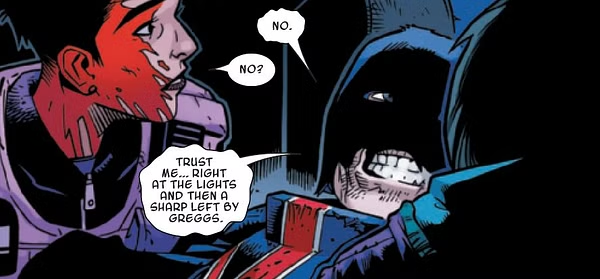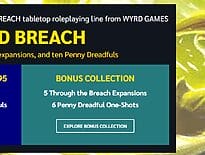Pelgrane Press is currently generating buzz on Kickstarter with £250,000 pledged for the 13th Age second edition. The campaign, which asked for £50,000, took about an hour to fund.
Geek Native covered the 13th Age 2e story two weeks ago, linking through to the free preview download, but now can do even better.
We’ve been lucky enough to get some of Rob Heinsoo’s time, and yes, that’s a Wikipedia link. Rob was the lead designer on D&D 4e, co-editor of Feng Shui: Hong Kong Action Roleplay and, significantly for us, 13th Age.
Was 13th Age created partly in response to D&D?
Sure! In the sense that both Jonathan and I had led design teams creating an edition of D&D, and in a few other senses. I think this next question will cover it . . .
What was the catalyst for 13th Age?
At some point after Jonathan and I had left WotC, Simon Rogers of Pelgrane Press talked with me at GenCon and said that if I was interested in designing a new roleplaying game, he was interested in publishing it. I thought about it and talked with Jonathan and we jumped on the chance to design a game together. We’ve been playing Wednesday night D&D games together since about 1998, and this seemed like the time to design the d20-rolling fantasy game we wanted to play together instead of designing a game that also had to make the corporation ‘happy.’ So we did!
And what about for The 13th Age 2e?
Oddly, the immediate catalyst was Frostgrave Second Edition, from Osprey Games and Joseph A. McCullough. That miniatures game’s Second Edition mainly intended to upgrade powers that players hadn’t found worthwhile. The Second Edition was still compatible with all the First Edition Frostgrave books. That approach made all the difference to me. I’d shied away from doing a second edition because I hate telling players that the books they liked earlier are now obsolete. I realized we could do something similar and upgrade the 13th Age character class spells and talents that were neither particularly useful nor particularly fun. Over time, the redesign shifted to embrace new approaches to an entire class (a musical and surprising bard), a revision of magic items to help magic cloaks and boots and necklaces compete better with magic weapons and armor, challenging new monster powers, and a thorough explanation of icon connections. But we’ve stuck to the original vision, 2E is still compatible with the books we published for 1E and for books published by other companies, like 13th Age Glorantha.

Was there any chance of this book being the 14th Age or, at least, moving world events on?
Two questions there, with different answers. No chance of 14th Age, in part because one of my goals was to avoid invalidating all the other 13th Age books that our fans have bought and that Pelgrane has published. We like 13th Age, and part of its fun is that everyone twists and revises big parts of the world every campaign. If your campaign wants to find a way to trigger and explore the 14th Age, that’s a special experience you created for yourself. The point of our half-designed setting is to let every campaign riff on the world in memorable ways.
As to moving world events on, we did! In one specific move: the Orc Lord is dead. And it’s up to your campaign to decide or figure out why, and what catastrophes will loom to make the Orc Lord’s reign of terror seem like good times.
Oh, and one point that wasn’t a question: this time around we’re doing two books! A Players’ Handbook and a Gamemaster’s Guide. I thought for the first years of the project that Second Edition could be one book, like the first, but when we got around to truly explaining the icon connection rules, the page-count rose above what Pelgrane was comfortable publishing under one cover.

Are we in a tabletop RPG bubble? What do you think 2026 will be like for the hobby?
If I haven’t thought about a serious question, I probably shouldn’t answer it! Off-the-cuff answers can be amusing, but there are any number of people who have been thinking seriously about answers to your question, and the truth is that I’ve been too busy working on big design projects to even keep up with other people’s thoughts, never mind maintaining a thought-through view of the future.
It almost sounds like you’ve been head-down, working away busily and in a studio protected from all distractions. Does the 13th Age 2nd edition not have any inspiration from or reflection of current game design trends?
Ah, I think I was trying to avoid typing answers to complex questions! First, I don’t know why we would be in an RPG bubble. The question surprises me, maybe I’ve missed worries about this being a bubble by not spending much time online lately! Obviously there are a couple big things happening in the USA between now and 2026. One of them is D&D doing a new edition. Another is grappling with Donald Trump trying to make a Revenge Tour Return to the White House. I suppose that if things go very weirdly with D&D’s new version, that might have bad long-term effects on RPGs, since name-brand D&D is still often the on-ramp for people getting into the hobby. But I don’t expect things to be that bad, and non-D&D RPGs might be able to blossom a bit if D&D is slightly weaker than expected. The Trump idiocy would have other chilling or galvanizing effects on my country. Jonathan Tweet set the new edition of Over the Edge in the dystopian future in which Trump won the 2016 election, and I’m hoping that we don’t go over that edge again.
As to game design trends, well, there are trends in different directions, including advances for games that emphasize player input in storytelling, games with simpler mechanics, and games inspired by 4th Edition D&D. In the part of the gaming ecosystem occupied by 13th Age, there’s now a trend for designs that have learned something from 4th Edition D&D. 13th Age was way ahead on that curve in 2013 and doing a second edition has helped us stay ahead! We’ve harnessed some of the crunchiness from 4e and 3e, but with streamlined mechanics that skip the dull stuff in favor of emphasizing player contributions to the world with One Unique Things and icon connection narrations. We’ve aimed for a game that can be enjoyed together by players who like crunch and players who value story. It has been wonderful fun to keep it rolling.
What have the last few years taught you about the hobby, games and the community? Have you changed your mind on anything?
I always thought of the solo mode of roleplaying games as reading the books. And there were always a lot of solo gamers of this type, people who loved reading rpg books but weren’t going to get around to running or playing a game, or not often.
So I probably shouldn’t have been surprised by the number of people who love watching other people play roleplaying games. But I was surprised!
Happily, unlike just reading books alone, I think that watching other people play games has helped solitare-gamers become people who play with other people, and helped people who played seldom to play more.

After this Kickstarter, what are you doing next?
Finishing 13th Age Second Edition! Keeping the artists busy with art suggestions, working with Lee Moyer as art director, analyzing playtest feedback with Jonathan and designing solutions in places where we got it wrong, working with high level pledgers on the Kickstarter to get their suggestions and illustrations into the books, getting chapters ready for our editor Trisha DeFoggi, and eventually going over layout with Jen McCleary.
And then…. finishing another 13th Age book I’m about 70% finished with, but need to adjust and complete now that 2E exists. Bestiary 3: Icon Followers, which is mostly a book of NPCs who follow the icons, statted up monster-style as people-to-fight.
There are also two card games I’ve designed playable drafts of but haven’t had time to test the latest versions of. No, scratch that. Three games. I’m happiest when I have a roleplaying project and a card game going simultaneously, so a few months from now, I will!
Quick Links
- Kickstarter: 13th Age.

